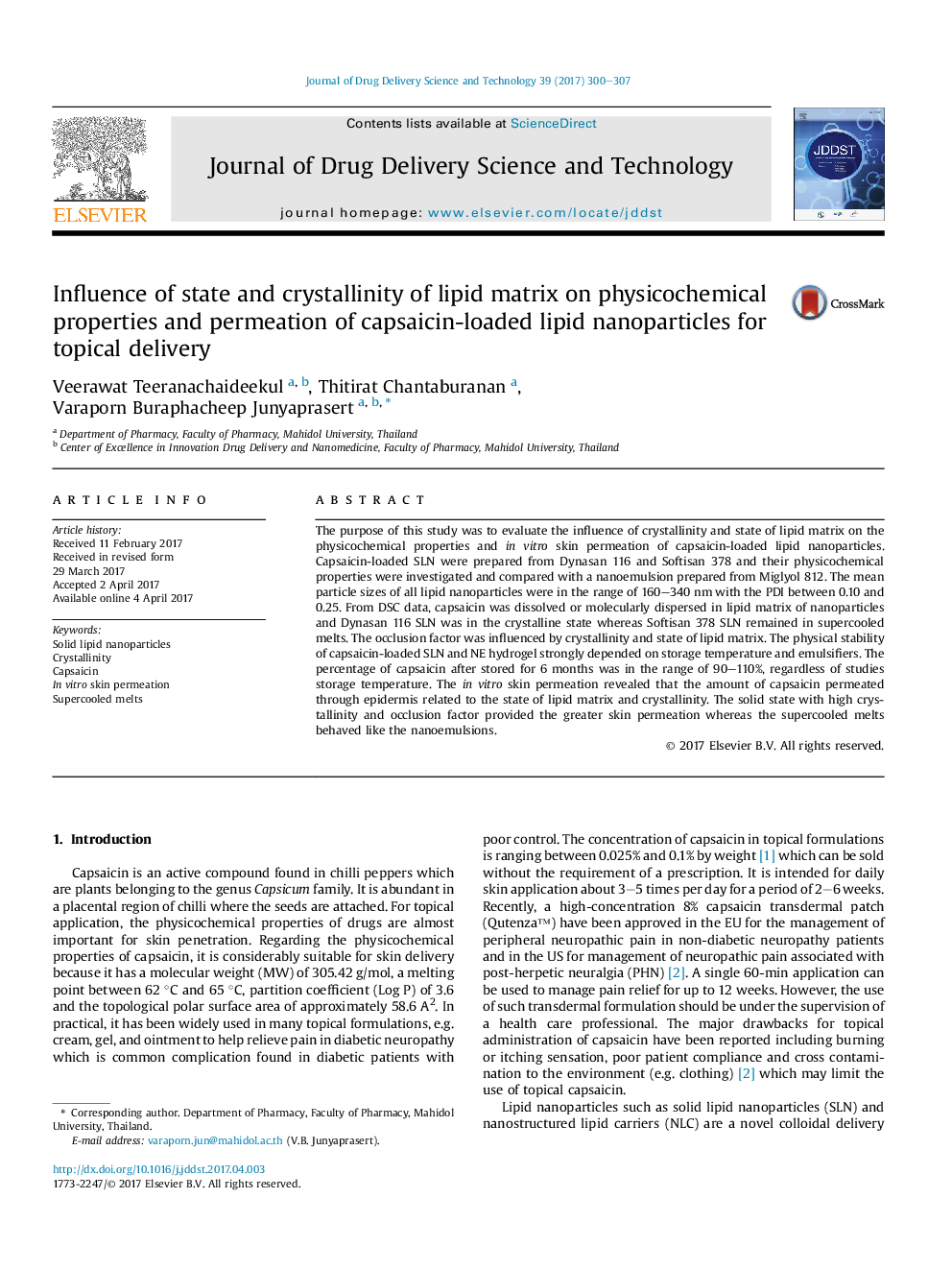| Article ID | Journal | Published Year | Pages | File Type |
|---|---|---|---|---|
| 5548148 | Journal of Drug Delivery Science and Technology | 2017 | 8 Pages |
â¢Dynasan 116 SLN possessed high crystallinity, occlusion factor and skin permeation.â¢Softisan 378 SLN exhibited supercooled melts with low occlusion and skin permeation.â¢Occlusion factor of SLN was greater than nanoemulsions and showed time dependence.â¢The solid state with high crystallinity of SLN provided the greater skin permeation.
The purpose of this study was to evaluate the influence of crystallinity and state of lipid matrix on the physicochemical properties and in vitro skin permeation of capsaicin-loaded lipid nanoparticles. Capsaicin-loaded SLN were prepared from Dynasan 116 and Softisan 378 and their physicochemical properties were investigated and compared with a nanoemulsion prepared from Miglyol 812. The mean particle sizes of all lipid nanoparticles were in the range of 160-340 nm with the PDI between 0.10 and 0.25. From DSC data, capsaicin was dissolved or molecularly dispersed in lipid matrix of nanoparticles and Dynasan 116 SLN was in the crystalline state whereas Softisan 378 SLN remained in supercooled melts. The occlusion factor was influenced by crystallinity and state of lipid matrix. The physical stability of capsaicin-loaded SLN and NE hydrogel strongly depended on storage temperature and emulsifiers. The percentage of capsaicin after stored for 6 months was in the range of 90-110%, regardless of studies storage temperature. The in vitro skin permeation revealed that the amount of capsaicin permeated through epidermis related to the state of lipid matrix and crystallinity. The solid state with high crystallinity and occlusion factor provided the greater skin permeation whereas the supercooled melts behaved like the nanoemulsions.
Graphical abstractDownload high-res image (151KB)Download full-size image
